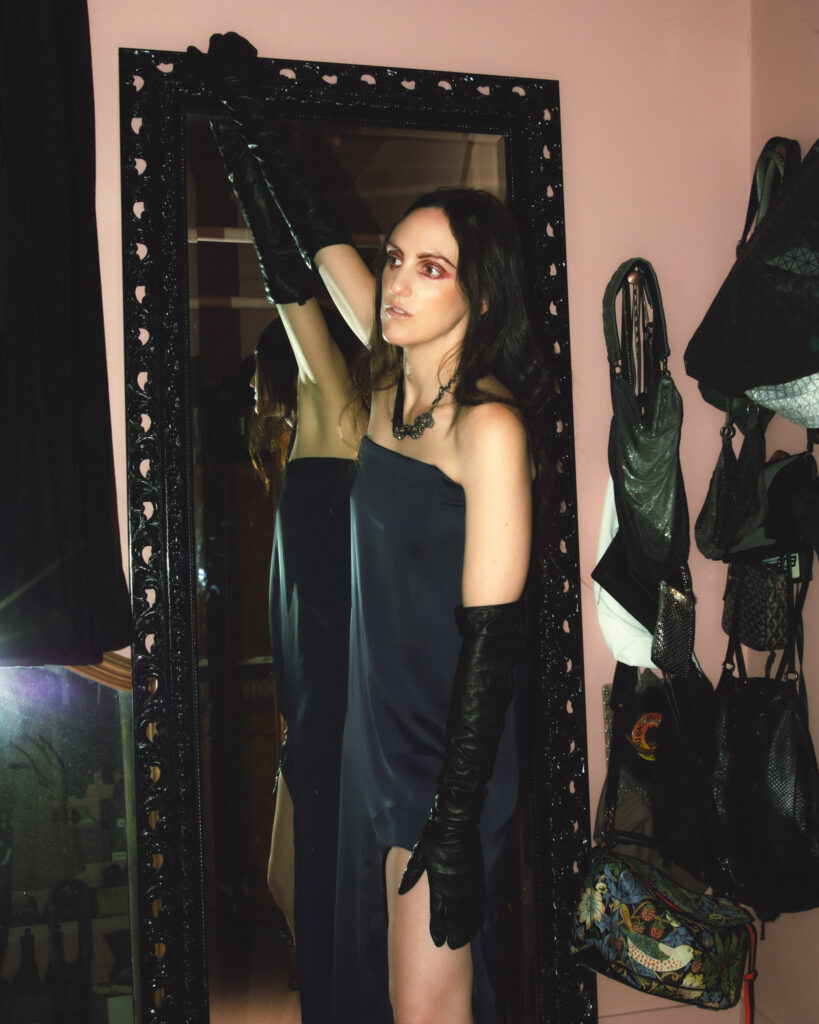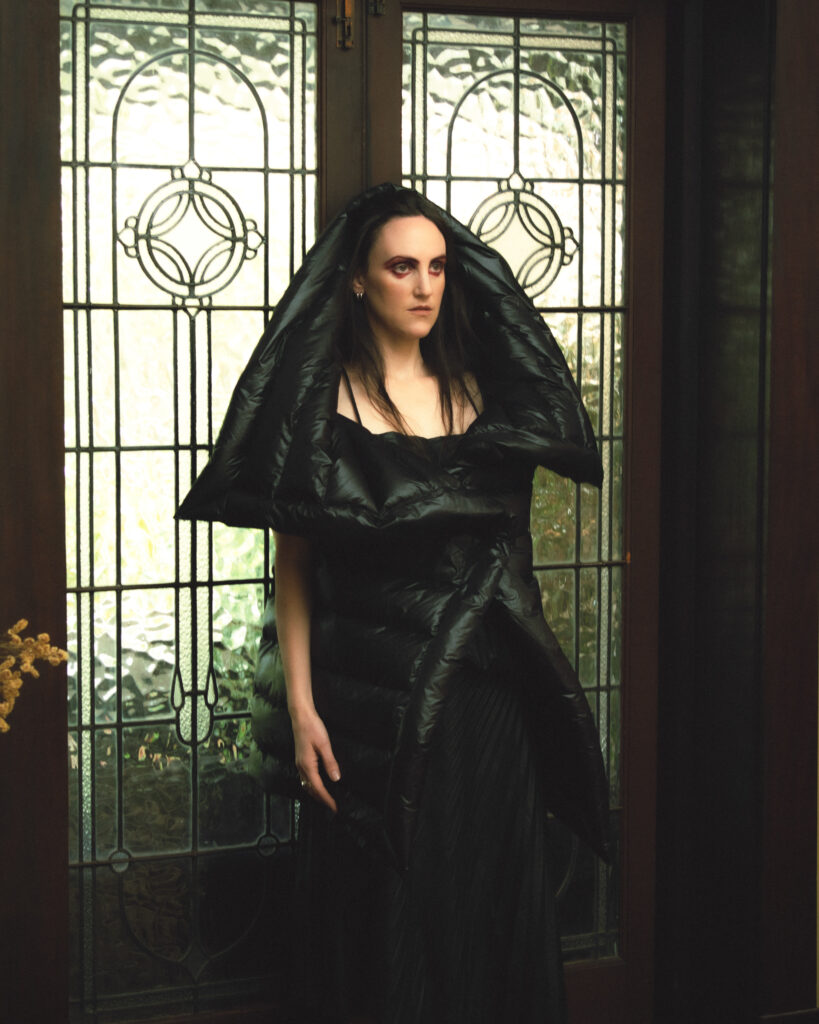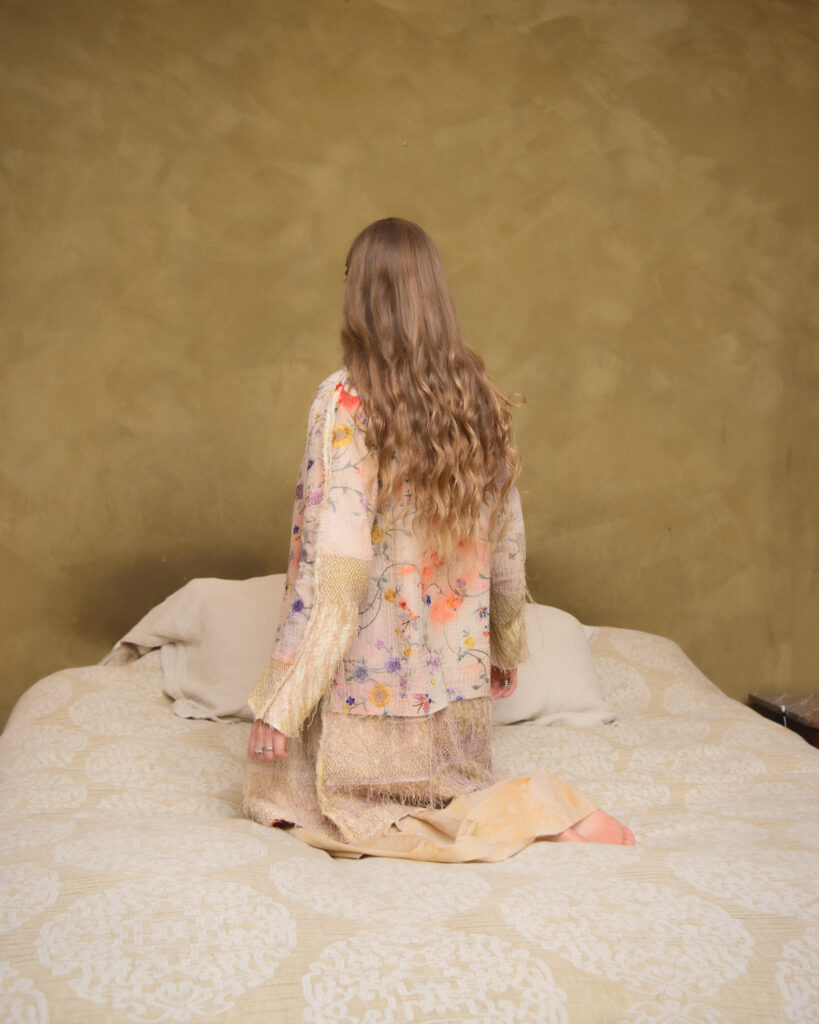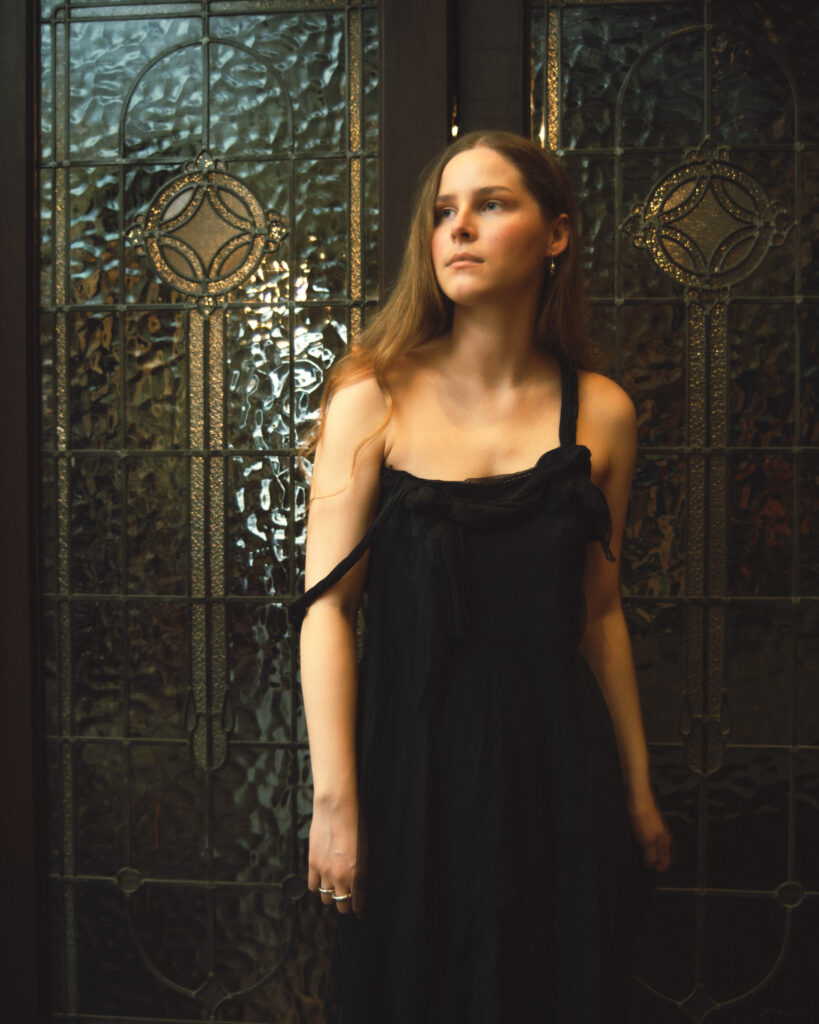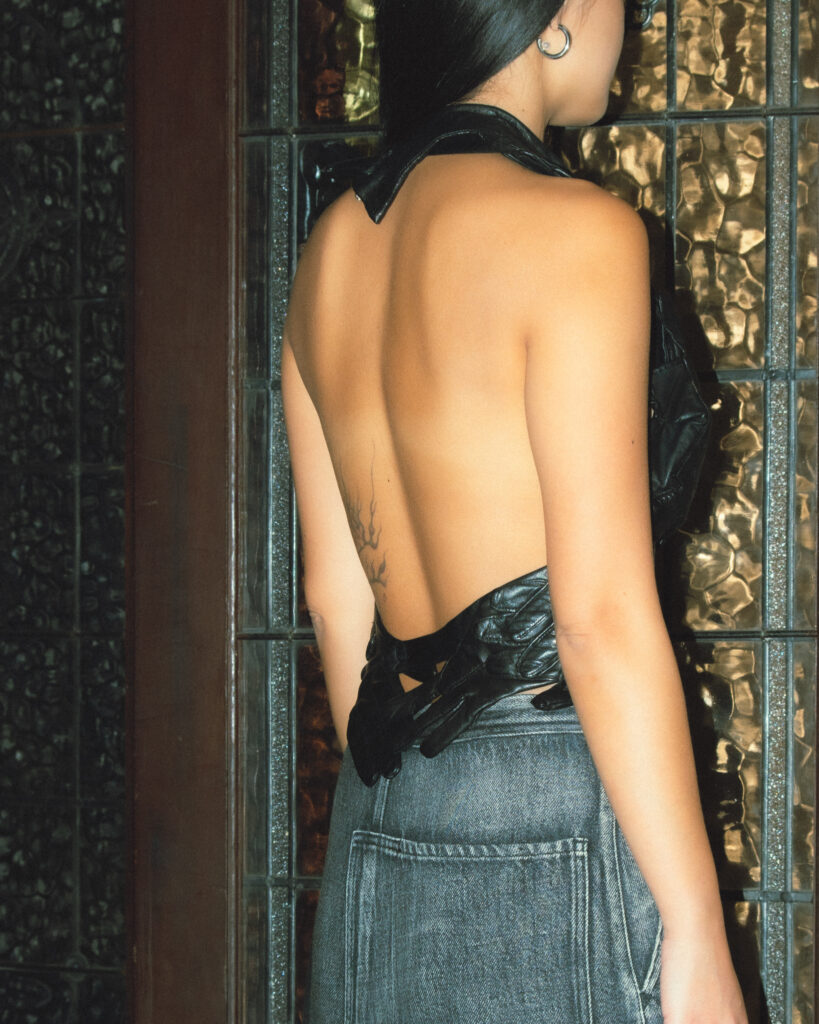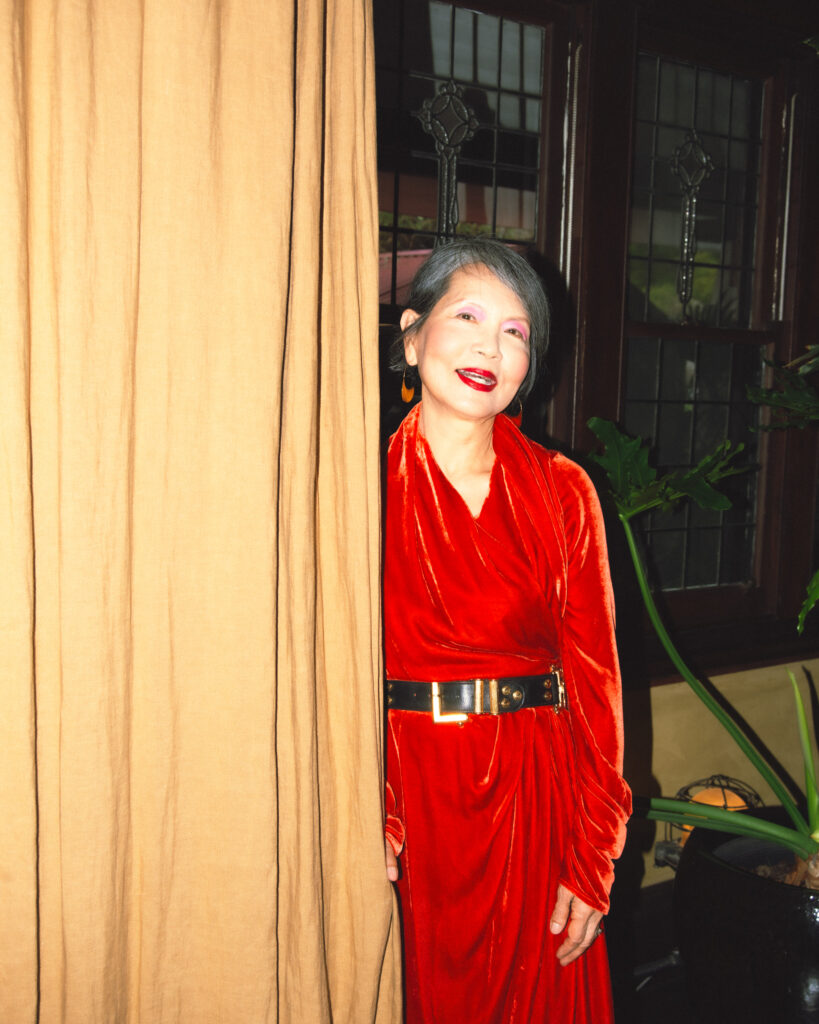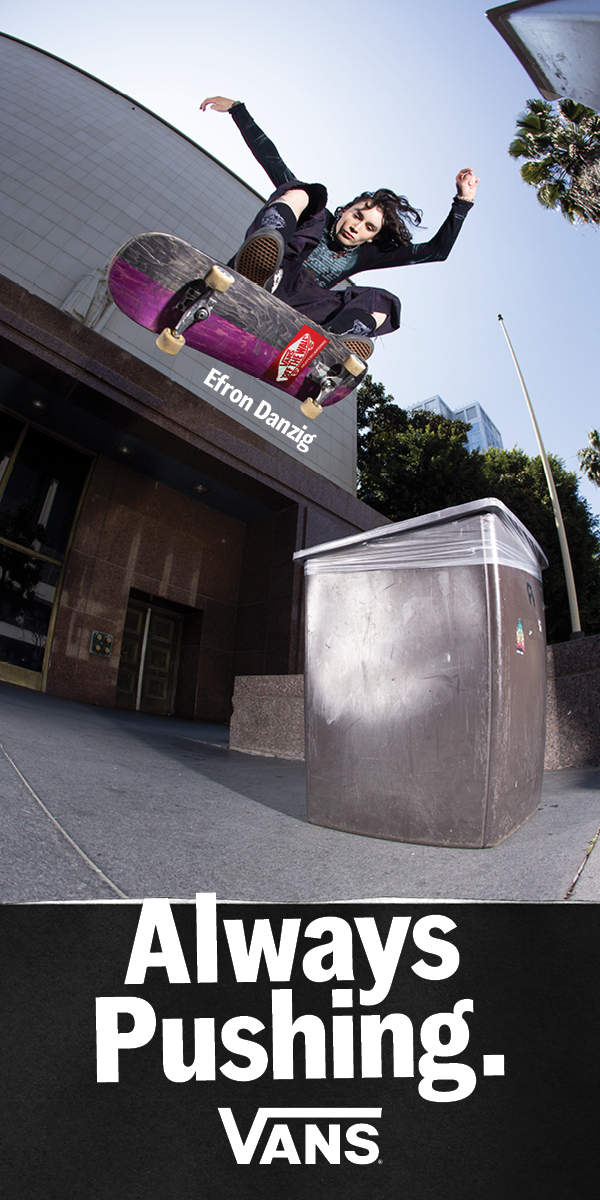Dilettante's Fashion Archive Market Returns

For over 15 years, Dilettante has stood among Australia’s leading high fashion retailers, offering a curated selection of designers from France, Italy, Japan, Belgium, the UK, the USA, and Australia. Now in its fourth year, Dilettante’s annual archival fashion market returns this July, showcasing pre-loved garments, footwear, and accessories from the wardrobes of its discerning clientele.
Devoted to the exchange of vintage designer pieces and perennial wardrobe essentials, the Dilettante Circle rejuvenates crafted attire destined to stand the test of time. “We expect to see a selection of 1990s and early 2000s pieces from designers including Yohji Yamamoto, Ann Demeulemeester, Haider Ackermann, Maison Martin Margiela, and A.F. Vandevorst,” says Dilettante Founder and Owner Diana Paolucci. Additionally, impeccably preserved Chanel footwear, original 1990s Helmut Lang pieces, and a stunning pair of Yohji Yamamoto black leather pointed-toe “winkle pickers” will be featured.
As Dilettante prepares for its annual archival fashion market, founder Diana Paolucci and fellow collectors share insights on their first significant purchases, the evolution of their personal styles, and the vital role vintage fashion plays in promoting sustainability within the industry.
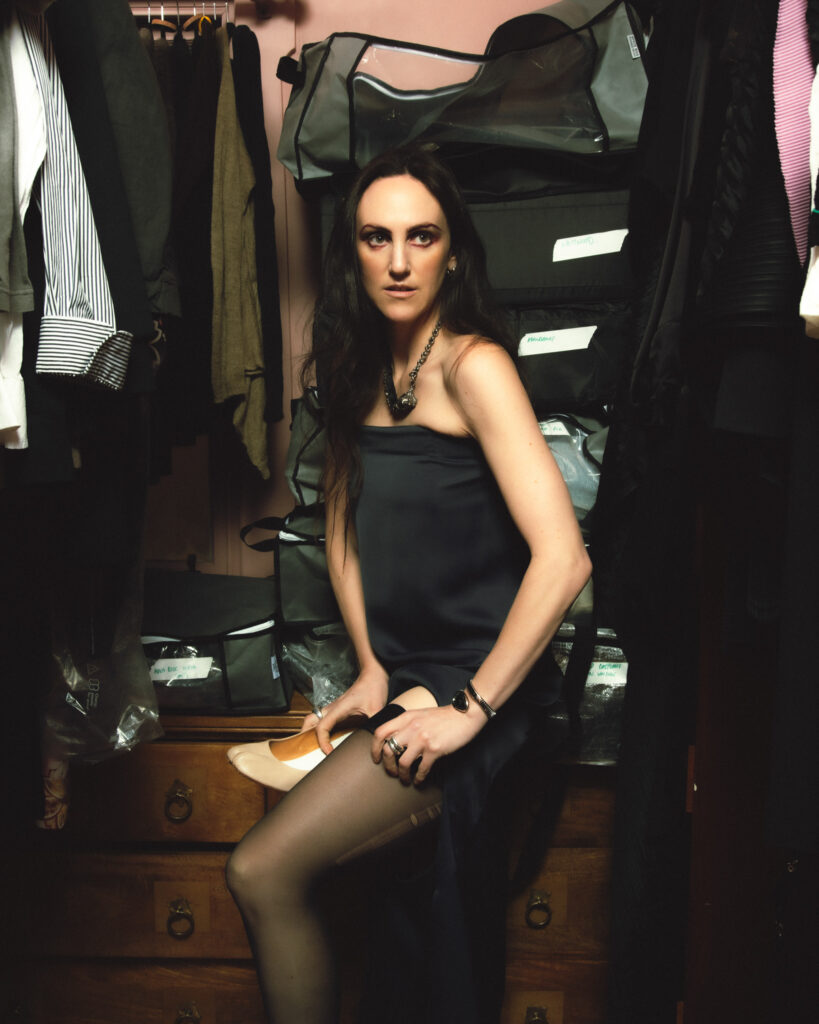
Diana Paolucci is the owner and director of Dilettante. Since 2007, Diana’s experience in buying and curation has provided a carefully considered offering of agenda-setting and first-in-class fashion, homewares, and cosmetics. Her unique vision and dedication have fuelled many community-driven initiatives, giving young designers and artists a platform to showcase their work in the store, whether through art exhibitions, capsule collections, or work experience for stylists and photographers.
Can you share the story behind the founding of Dilettante? What inspired you to create a directional luxury retail store, and what were some of the challenges you encountered along the way?
I was a shy kid growing up and extremely anxious when interacting with people. Fashion was my way of communicating without words. It sounds pretty cliché, but fashion became my armour to deal with the world around me. People started wanting to hang out with me and I guess I looked interesting to them. It gave me confidence. And I believe that’s what makes fashion and style so magical and why it’s a valid form of self-expression, not just some frivolous luxury for a select few.
So with fashion and art being my biggest interests, I studied fashion and textile design at TAFE and I dabbled in making jewellery and sold it to a few boutiques around Perth. After graduating, I had a fashion label for a year but quickly realised that it wasn’t for me. After working in a bunch of different retail stores, I knew that retail was where my interest lay. My folks have been intrinsic in my career direction—they always had their own businesses, so that was a common part of discussions around the dinner table. Dad was my mentor and biggest cheerleader; he once put an advertisement in the local paper advertising my services for “any fashion-related work experience!” My mum was the one who helped me price my first jewellery line and is responsible for my addiction to Excel spreadsheets.
In 2006, I spent a month in Paris researching showrooms and trying to secure the brands I wanted for my store. That was the first challenge— trying to convince brands to sell to a 23-year-old girl from tiny Perth. My mum ended up flying over to Paris to help me look and once we had secured Vivienne Westwood, all the others opened up too.
Running a small business has its challenges, but I still find so much joy walking into my store every day. I love building a creative and diverse, but down-to-earth, team. That is very important to me—that everyone is capable of getting their hands dirty and multi-tasking. Dilettante is now in its 18th year and it feels like it’s found its sweet spot. Things are calm and steady and the future looks good!
What inspired you to start collecting vintage and/or archival fashion pieces? And what was your first significant purchase?
I first started exploring fashion when I was in high school. By the time I was studying fashion, I had started buying pieces via eBay. This would have been early 2001/2002, so there wasn’t much available in Perth or online at that time. I remember my first item was an Ann Demeulemeester white tank from SS199; I still have it. I feel that was my first foray into avant-garde fashion designers. Although, to my Year 12 ball, I did wear a Wild and Lethal Trash (Walter Van Beirendonck) dress with big black boots and twisted my hair with black extensions and feathers on the end. Come to think of it, that is very Ann D!
Can you describe how your personal style has evolved over the years and the key influences that have shaped it?
Fashion was a way for me to communicate my interests without having to vocalise too much. Strangely, I was always fairly confident about my personal style. I was definitely a risk-taker, pushing the boundaries of what an outfit should be. I was always very crafty, not skilled, but really enjoyed crafting things, like reconstructing old clothes and making jewellery out of old toys or found electrical objects. Starting Dilettante obviously gave me access to luxury fashion. I would order anything that was odd and quite strange but in a beautiful way. My wardrobe was full of Undercover, Ann Demeulemeester, A.F Vandevorst, Yohji Yamamoto, Maison Margiela, and some intensely embellished Peachoo+Krejberg beaded pieces. Over time, I felt like I no longer had to prove anything to anyone. I’ve begun to care less about what others think of me and, along with having two kids in the last seven years (and being extremely time poor), my style is much more understated. I gravitate towards my Uma Wang trousers, Rick Owens or Marc Le Bihan tops and a Song For The Mute jacket with Rick boots or Uma ballerina flats.
How do you see the role of archival and vintage fashion in promoting sustainability within the fashion industry?
It helps people understand what quality construction is and how good design is timeless. I believe it also encourages designers and consumers to continue to pursue their own vision and their own aesthetic and not get enticed by fleeting trends.
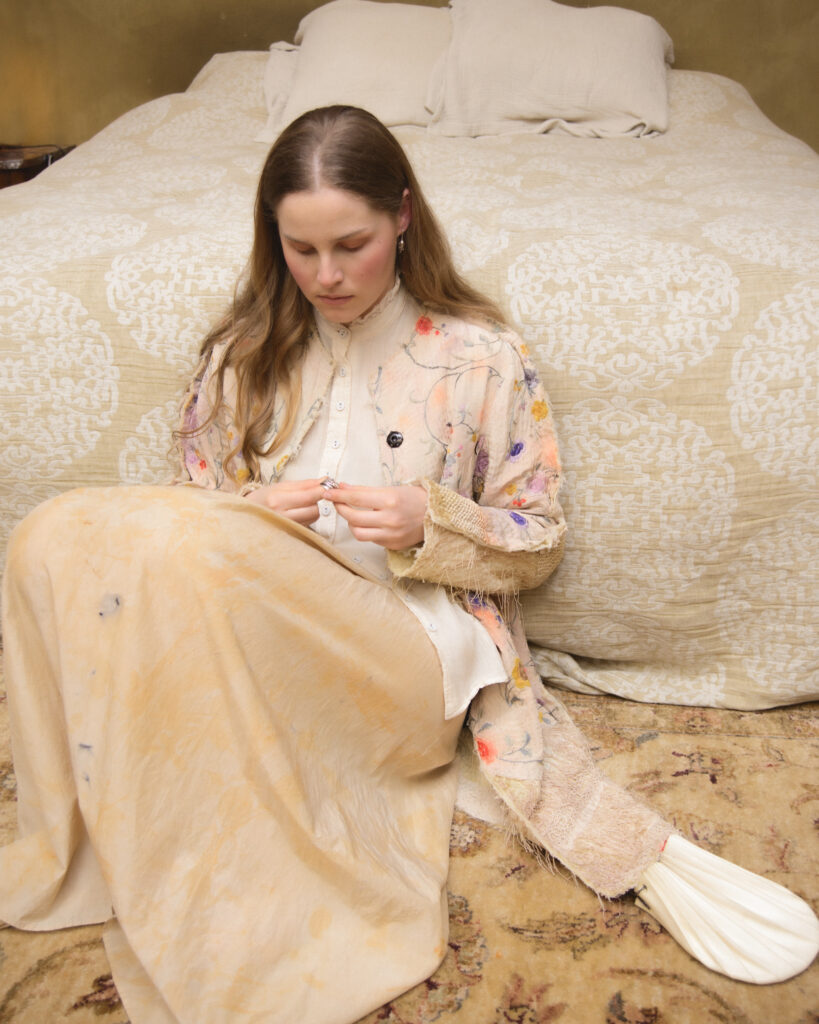
Megan Alice Bouwer is a young, emerging artist specialising in portraiture and still life. Her oil paintings have been showcased in exhibitions alongside many notable Australian artists. Her creativity also extends to fashion design and visual merchandising.
What inspired you to start collecting vintage and/or archival fashion pieces? And what was your first significant purchase?
I've always been a collector, since childhood. I really enjoy the hunt and the anticipationn of tracking down a piece that I love. It's a similar experience to trawling through antique markets and searching for something niche. When I discovered my love of fashion, it became something I felt compelled to start collecting. One of the first significant purchases I remember making was a pair of 1990s Dirk Bikkembergs boots with metal heels. They were a size too big, so I'd wear two pairs of thick socks out of desperation to wear them.
Can you describe how your personal style has evolved over the years and the key influences that have shaped it?
I think my style has evolved to feel very authentic to me. I don't feel pressure to conform to trends like I used to when I was younger. My sensibilities have changed and deepened.
I've always appreciated the history behind objects, with a strong love of antiques and historical aesthetics. This, I would say, is one of my key influences. I feel like my personal style is an amalgamation of all my interests. Who I surround myself with has also had a big influence on the evolution of my style. Friends and partners that share the excitement for experimenting are so important and provide me with the space to grow.
How do you see the role of archival and vintage fashion in promoting sustainability within the fashion industry?
Archival and vintage fashion are so crucial for changing the mindset towards fashion. It promotes the longevity of the design! It's the polar opposite of fast and throwaway fashion. I think it also slows the pulse of the trend cycle, as archival and vintage fashion exist outside of trends. I am so conscious of sustainability in my wardrobe—I find my style leads me to purchase less and of a higher quality making me a more conscious consumer.
In what ways do you see the intersection of art and fashion influencing your collection?
For me, there is a definite symbiotic relationship between art and fashion. I love the emotional capabilities of fashion; how it can quite literally be wrapped up in the storytelling of a garment. You could compare that to how a painting or artwork tells a story and evokes a feeling or mood. That’s something I look for in a garment; I want to feel something. I see harmony as an important artistic principle and that governs my fashion choices.
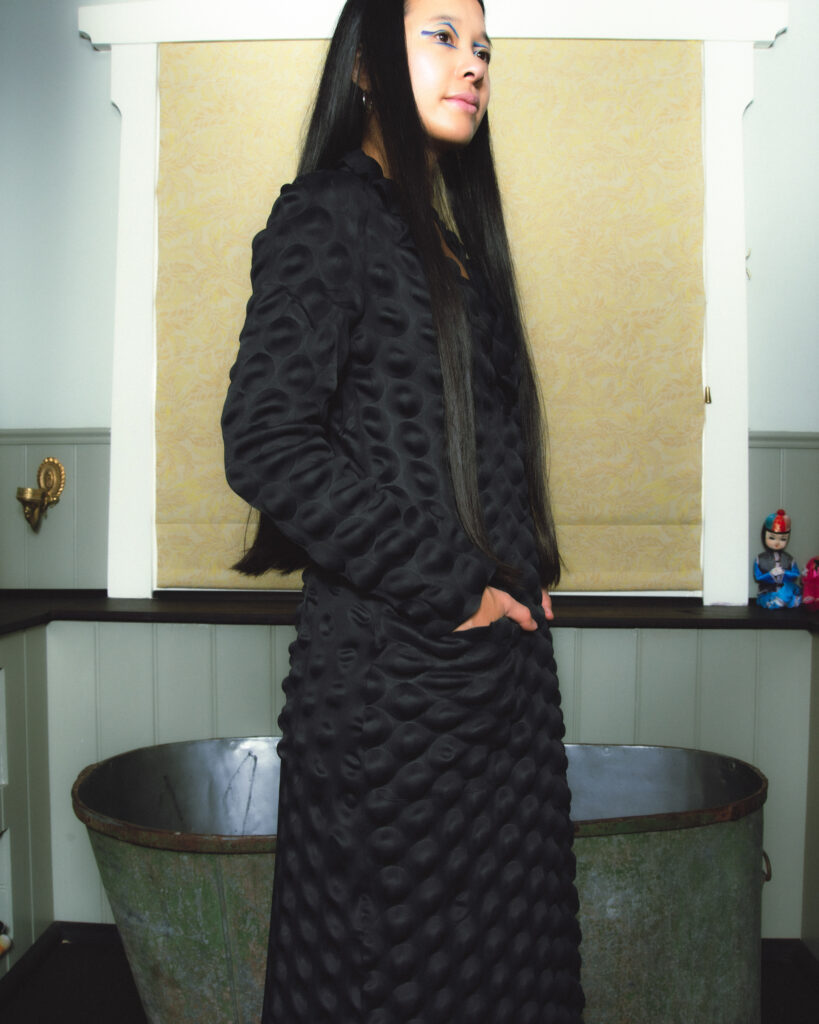
Andrea Goh made her mark on the Australian fashion industry over a decade ago when she became one of Perth’s most well-known fashion bloggers and the owner of an online boutique. She developed her personal style through her love of archival fashion and has since become an avid collector of vintage designer pieces, with a particular interest in labels Comme des Garçons, Maison Margiela, and Junya Watanabe. Andrea’s creative drive and distinctive aesthetic have now led her to jewellery design, where she has found success with her own brand, Miro Miro.
What inspired you to start collecting vintage and/or archival fashion pieces? And what was your first significant purchase?
When I was first drawn to brands such as Comme des Garçons, Junya Watanabe and Issey Miyake, I didn't have the means to buy them first-hand. Buying pre-loved pieces from these labels was an accessible way of attaining them. That was the start, and I've been collecting pre-loved, vintage and archival pieces ever since. My first significant purchase was a Pleats Please Issey Miyake American Comics dress from the 1990s. I got it on eBay and it was such a steal.
Can you describe how your personal style has evolved over the years and the key influences that have shaped it?
I think age and lifestyle have influenced my personal style the most. When I was younger, I used to buy loud statement pieces, but now I prioritise timelessness, comfort and wearability. I've learned what shapes and colours suit me most.
How do you see the role of archival and vintage fashion in promoting sustainability within the fashion industry?
I believe archival and vintage fashion highlight quality over quantity. Special, timeless styles that are beautifully crafted transcend time and thus have longevity.
Based on your experience as a fashion blogger, why do you think vintage and archival fashion pieces have gained so much popularity?
Vintage and archival fashion pieces are the antithesis of fast fashion. Not only does buying vintage fashion reduce waste, it also allows individuals to create unique looks, which promotes a culture of individualism as opposed to mass consumption.
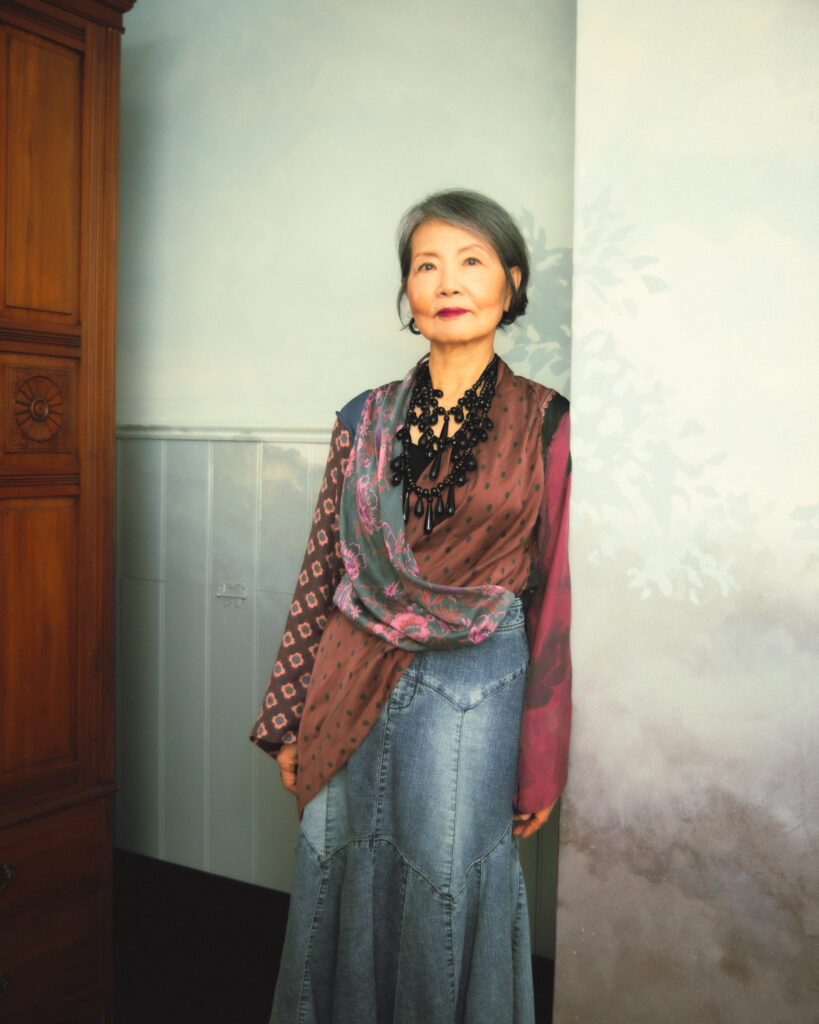
Younghi Newman was born and raised in South Korea and has had a lifelong appreciation for design, collecting mementoes and artefacts from her extensive travels. Her love of vintage clothing and fascination with unusual and intriguing designs have an influence on her eclectic style. Younghi’s intuitive approach to curating her personal style means she isn’t bound to just one aesthetic, having a collection of vintage pieces alongside archival Rick Owens, Vivienne Westwood, Alexander McQueen, and Comme des Garçons.
What inspired you to start collecting vintage and/or archival fashion pieces? And what was your first significant purchase?
It could have been the old Italian and French cinemas I used to be hooked on. My very first purchase was a Levi's denim shirt at an Oxfam in 1978, soon after I arrived in the UK from South Korea. (I didn't know it was an Opshop and I didn't know what an Opshop was either.) It was a big deal as denim clothing was only available on the black market at the time and was frowned upon (it was considered not ladylike) in Korea but it was high on my wish list. That denim shirt is still in high rotation in my wardrobe.
Can you describe how your personal style has evolved over the years and the key influences that have shaped it?
I think I've moved a little out of my comfort zone of wearing the same style as everyone else. It might be the confidence coming from maturity? There are some advantages to getting older, after all!
How do you see the role of archival and vintage fashion in promoting sustainability within the fashion industry?
Invaluable! Could someone remind me how many tonnes of clothing go to landfills every year?
Your collection includes pieces from designers like Rick Owens, Vivienne Westwood, Alexander McQueen and Comme des Garçons. What draws you to these designers, and how do they reflect your style?
I believe that uniqueness and timelessness are the essence of these designers (and some others I love), and their designs seem to allow me to be me. They make me feel ‘just right’.
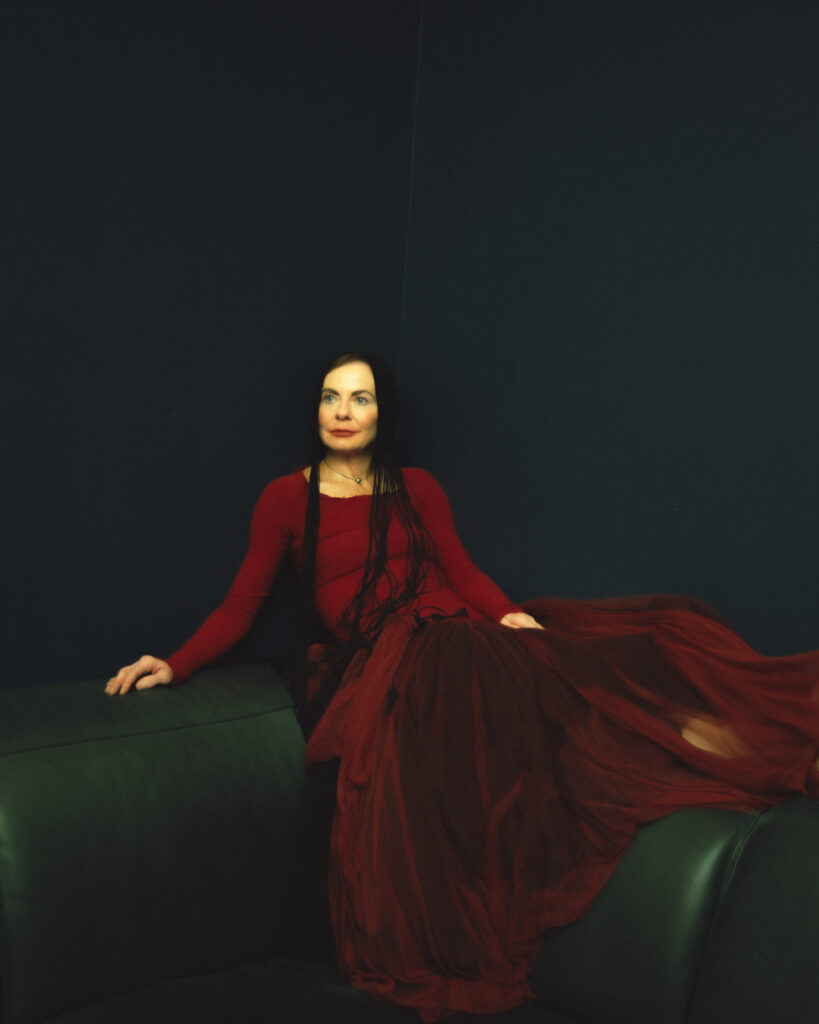
Veronika Kretzer is a general paediatrician and adolescent physician based in Perth. Her career has taken her all over the world, including Europe, the UK, and the Middle East. Veronika's interest in fashion and art has been a lifelong passion, using fashion as a way to express her personality and mood daily with the intent to make life more enjoyable.
What inspired you to start collecting vintage and/or archival fashion pieces? And what was your first significant purchase?
I have always been interested in fashion, not just in an aesthetic sense but also in the ways that culture, politics, and history have influenced fashion. I have been inspired by the 1920s era as well as the French oriental colonial era—specifically, the fluidity of form, the light fabrics that are soft and flowing, and the beautiful colours. As a university student and in the early years of my career, my income would be too low to pursue my fashion fantasies, so I found it a creative challenge to explore vintage fashion and rework it in a way that suited my style.
I lived in Europe (Vienna and Oxford) for most of my thirties and early forties. Here, I had the opportunity to explore the enormous range of vintage fashion that was accessible. Paris, Rome, Vienna and London had an abundance of opportunities to find eclectic archival and vintage fashion pieces. I learned that good-quality pieces that are well designed, beautifully cut and use quality fabrics would hold their appeal over time.
Over the years, with my interest in fashion, there have been a number of designers that I keep gravitating back to. I have a great attraction to Rick Owens’ fluid and graceful but still eclectic style; Ann Demeulemeester, for her elegant designs with a quirky edge; and Jean Paul Gaultier for his unapologetically brazen designs. It has only been recently that I discovered Marc Le Bihan. My most significant (and precious) pieces are two Marc Le Bihan dresses that are white and red with tulle skirts. I feel like I am living my fantasy of being a ballerina (although I do wear them with my Doc Martens platform boots).
Can you describe how your personal style has evolved over the years and the key influences that have shaped it?
My inherent tastes and style have probably remained similar in terms of my love of elegant silhouettes with soft textures and fluid forms contrasted with a bit of grunge. With maturity, I have become more comfortable with my own tastes and more confident in reworking things. I am less worried about what other people think of me and more confident in subtly challenging “norms.” For example, I love mixing elegant, silky dresses with grungy bike jackets and boots.
Another significant change with age is that I don’t save clothes for “special occasions.” Life is short and my daily life is made more joyful and interesting by feeling good in the clothes that I am wearing (which vary according to mood and occasion).
How do you see the role of archival and vintage fashion in promoting sustainability within the fashion industry?
I think vintage and archival fashion are absolutely essential to promoting sustainability within the fashion industry. Firstly, we need to recognise that some of today’s throwaway “fast fashion” is not only detrimental to the environment, but it also enables the continuation of slave labour in developing countries. Secondly, archival fashion encourages the appreciation of quality with items that will stand the test of time and are hence more sustainable. Thirdly, it encourages a move away from mindless acquisition of new and current trends to a more mindful and creative approach to fashion.
I feel joy to think that a vintage piece that I have worn and loved for years can be styled and worn by someone else in a completely different way, for many more years.
Dilettante Circle will run for two days on Sunday, July 28 and Monday, July 29. To find out more information for buyers and sellers, visit dilettante.net.
photography TÜLAY DINÇEL
make-up ASHLEY BROCKMAN using NARS
Alasdair McLellan: What You See is What You Get
By Sarah Buckley
Into The Stradasphere
By Lola McCaughey and Rachel Weinberg
Vans Launches 'Always Pushing'
By To Be Team
Julia Baldini's Shoes Arrive In The Boot
By Alexia Petsinis
Kiko Kostadinov Wants Everyone to Take Their Vitamins
By Daphné Gosselin
Artist Chelsea Farquhar Moves into Clothes
By Sharmonie Cockayne
